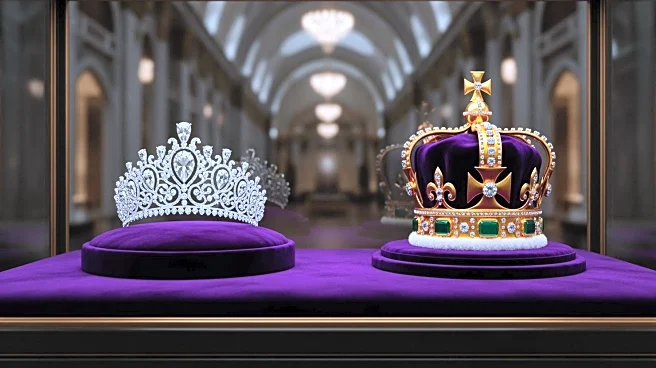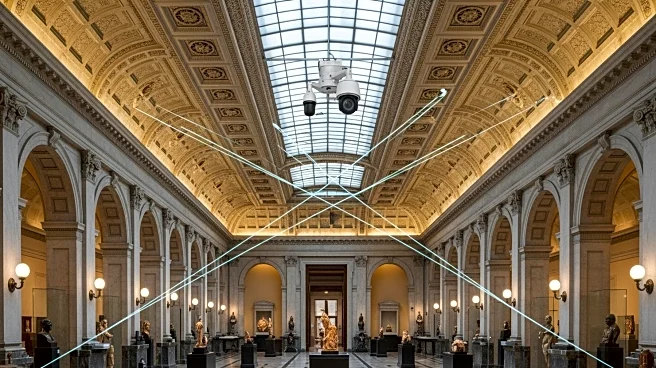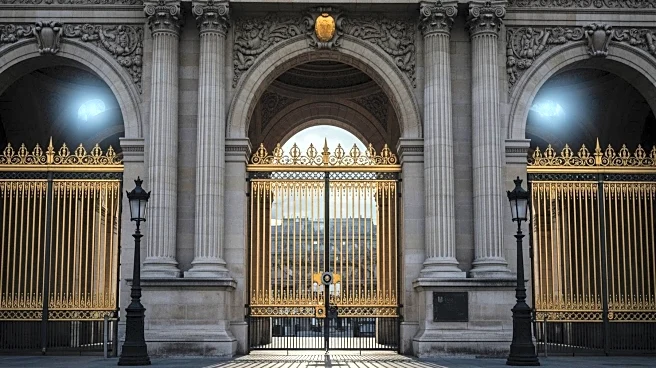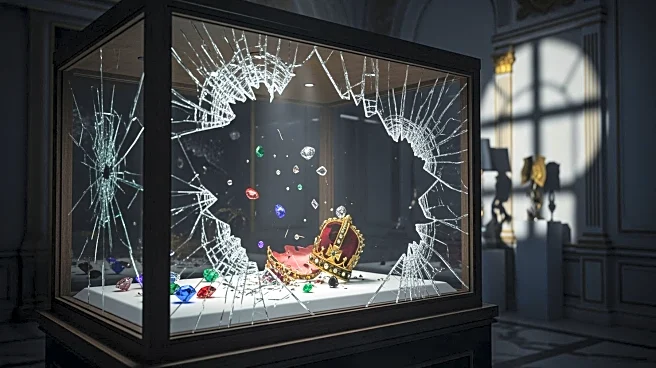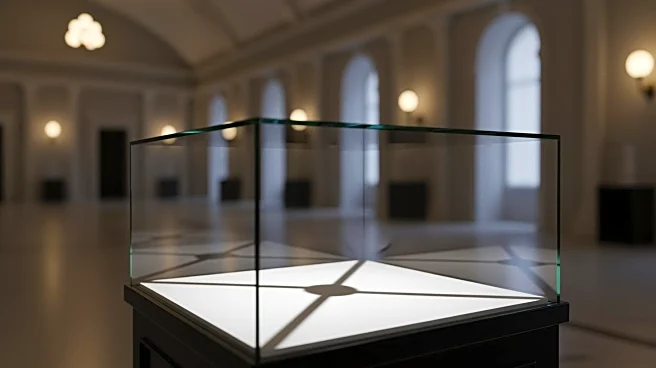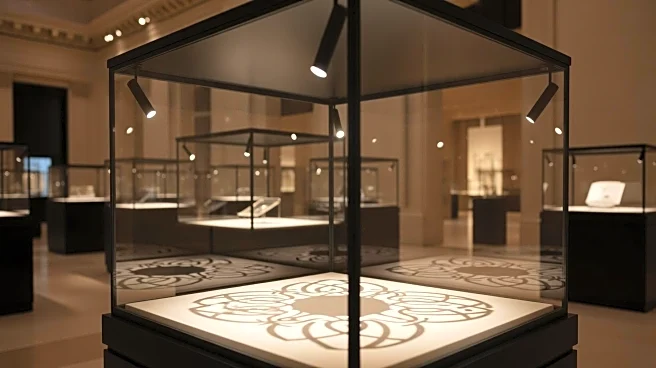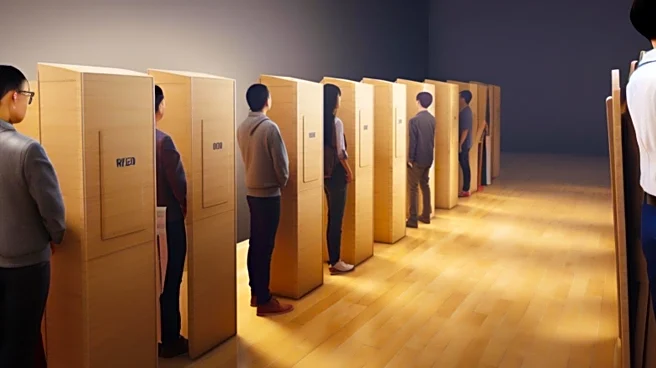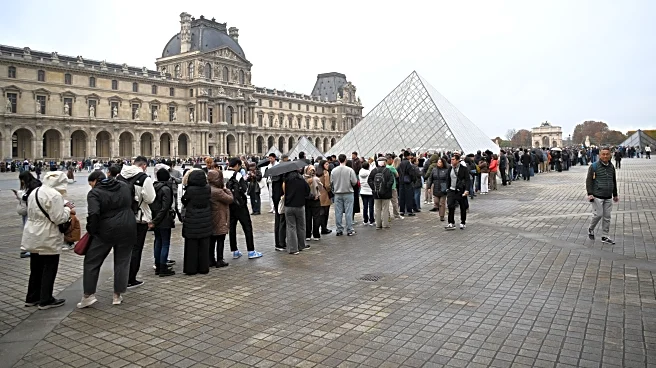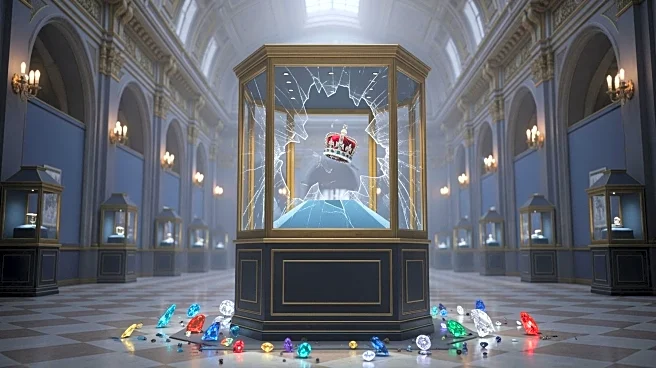What's Happening?
In a brazen daylight heist, four suspects stole nine pieces of France's crown jewels from the Louvre Museum in Paris. The theft occurred in just seven minutes on a Sunday morning, utilizing a truck-mounted
ladder to access the Apollo Gallery. The thieves smashed display cases with angle grinders, taking necklaces, tiaras, and brooches. Despite the high-profile nature of the crime, the thieves left behind the 140-carat Regent diamond, valued at $60 million. The incident has prompted French authorities to reassess security measures at cultural sites, as the stolen items are at risk of being melted down and sold.
Why It's Important?
The theft represents a significant cultural and national loss for France, impacting the country's heritage and international reputation. The stolen jewels, tied to France's royal history, are irreplaceable, and their potential destruction would be a permanent loss. The incident has sparked a national debate on security at cultural institutions, with political implications as President Emmanuel Macron faces criticism over state security measures. The heist also highlights vulnerabilities in museum security, prompting a reevaluation of protective strategies for cultural artifacts.
What's Next?
French authorities are conducting a manhunt to recover the stolen jewels before they can be dismantled. The Culture and Interior ministries have convened to strengthen security at cultural sites. President Macron has vowed to recover the stolen items and bring the perpetrators to justice. The incident may lead to increased security funding and policy changes to prevent future thefts. The international art community is also on alert, as the unique nature of the stolen items makes them difficult to sell, potentially leading to their destruction.
Beyond the Headlines
The heist underscores broader issues of cultural preservation and the challenges of protecting national heritage in a globalized world. It raises questions about the adequacy of current security measures and the balance between public access and artifact protection. The incident may influence future museum policies and international cooperation in art crime prevention.
